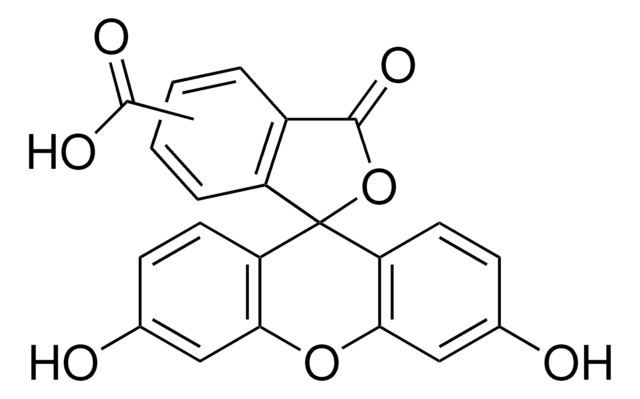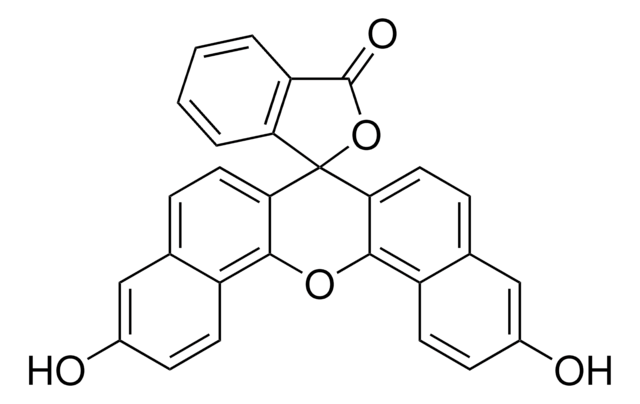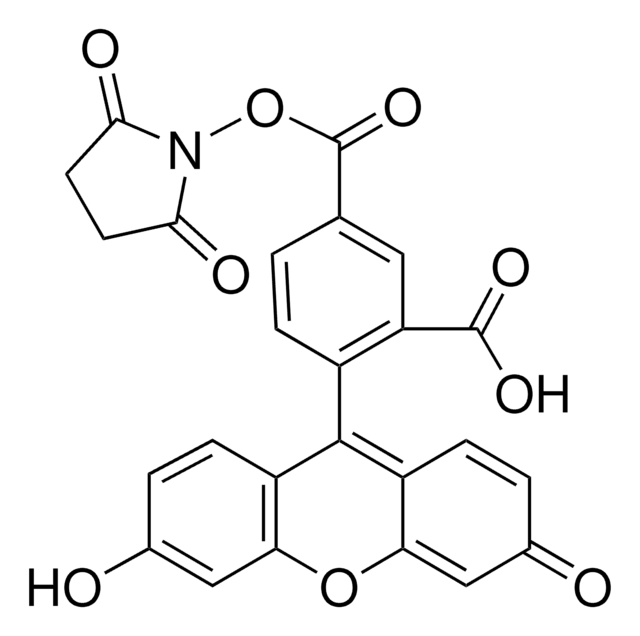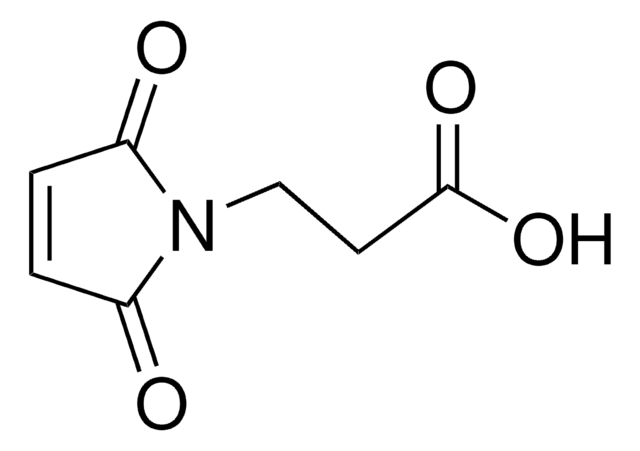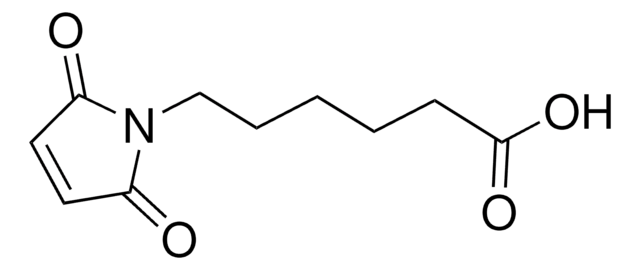21932
5(6)-Carboxynaphthofluorescein
BioReagent, suitable for fluorescence, ≥90% (HPLC)
About This Item
Prodotti consigliati
Nome Commerciale
BioReagent
Livello qualitativo
Saggio
≥90% (HPLC)
Stato
solid
pKa
7.6
Fluorescenza
λex 512 nm; λem 567 nm (acid/neutral)
λex 598 nm; λem 668 nm (basic)
Compatibilità
suitable for fluorescence
Stringa SMILE
OC(=O)c1ccc2c(c1)C(=O)OC23c4ccc5cc(O)ccc5c4Oc6c3ccc7cc(O)ccc67.OC(=O)c8ccc9C(=O)OC%10(c%11ccc%12cc(O)ccc%12c%11Oc%13c%10ccc%14cc(O)ccc%13%14)c9c8
InChI
1S/2C29H16O7/c30-17-4-6-19-14(11-17)1-9-23-25(19)35-26-20-7-5-18(31)12-15(20)2-10-24(26)29(23)22-8-3-16(27(32)33)13-21(22)28(34)36-29;30-17-4-7-19-14(11-17)2-9-22-25(19)35-26-20-8-5-18(31)12-15(20)3-10-23(26)29(22)24-13-16(27(32)33)1-6-21(24)28(34)36-29/h2*1-13,30-31H,(H,32,33)
ANUHNEJUELPITC-UHFFFAOYSA-N
Applicazioni
Non trovi il prodotto giusto?
Prova il nostro Motore di ricerca dei prodotti.
Codice della classe di stoccaggio
11 - Combustible Solids
Classe di pericolosità dell'acqua (WGK)
WGK 3
Punto d’infiammabilità (°F)
Not applicable
Punto d’infiammabilità (°C)
Not applicable
Dispositivi di protezione individuale
Eyeshields, Gloves, type N95 (US)
Scegli una delle versioni più recenti:
Possiedi già questo prodotto?
I documenti relativi ai prodotti acquistati recentemente sono disponibili nell’Archivio dei documenti.
Il team dei nostri ricercatori vanta grande esperienza in tutte le aree della ricerca quali Life Science, scienza dei materiali, sintesi chimica, cromatografia, discipline analitiche, ecc..
Contatta l'Assistenza Tecnica.